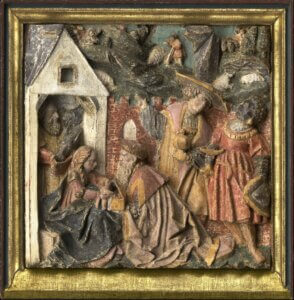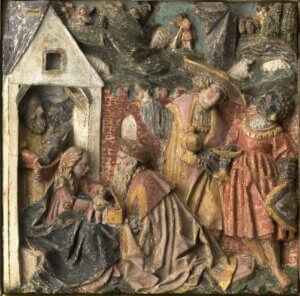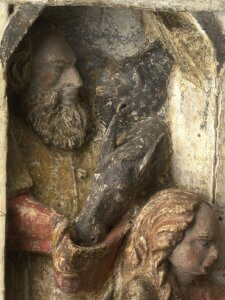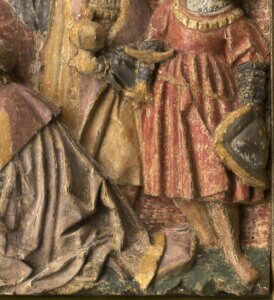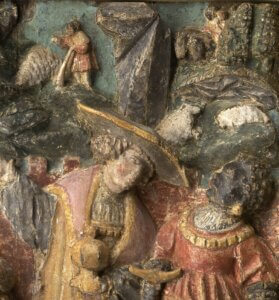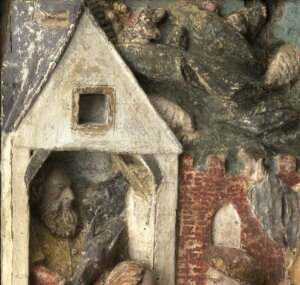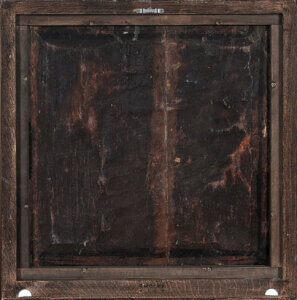This square relief depicting the Adoration of the Magi shows an aspect of Christ’s salvation story with many carefully added details. This image theme was already depicted on ancient and early Christian sarcophagi and also enjoyed great popularity in the Middle Ages.
Mary, wrapped in a wide cloak with expansive, voluminous folds, sits in front of the entrance to a stable, with the naked baby Jesus on her lap. It is held upright by the mother and opens a casket offered to it. In front of the Madonna are depicted the three wise men from the East in different costumes, who want to pay homage to the child. Caspar, Melchior and Balthasar are shown larger: The oldest, an old man with a long beard, kneels before the child and looks at Mary at eye level. The second, a youth without a beard and with short hair, is turned away from this central scene and has turned to the third king, who is depicted as a “Moor,” apparently absorbed in conversation with him. Both have different, splendid gifts in their hands. Here the second in the speech gesture – presumably originally referring to the star – refers to the stables in which Joseph is standing and is feeding the ox and the donkey. The donkey, whose nostrils are just dipping into the feed bag, forms a playful moment of the otherwise reverential presentation.
The scene takes place at a doorstep, with the pediment of the stables visually exaggerating the Holy Family. Behind the three wise men are visible the city gates through which they first came. In the upper field of the picture, in the distance, shepherds are depicted driving their sheep through a hilly-rocky landscape or resting there. This probably refers to the good news about the birth of Christ, which the angel of the Lord has already delivered to the shepherds. The relief panel probably comes from the side wing of an altar retable, where it was included in the biblical cycle. The lush and complex folds suggest a date of origin around 1500. The composition is strongly reminiscent of Albrecht Dürer’s woodcut from the Life of Mary with the same subject, which was created around 1503/04. A similar relief can be found in the Landesmuseum Württemberg (WLM 1963-8).
